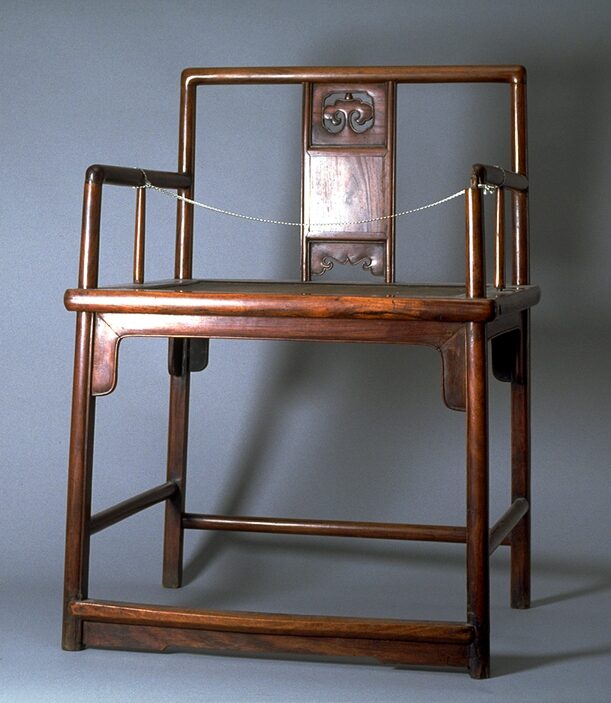Armchair
Chinese

Description
Subject Matter:
The early history of Chinese furniture recorded in excavated material, engraved stone and stamped brick reveals a mat-level furniture culture. The ancient Chinese knelt or sat cross-legged upon woven mats surrounded by various furnishings including low tables, screens, and armrests. Examples of excavated lacquer furniture from the ancient kingdom of Chu (ca. 500 BC) demonstrate an aesthetic of minimalism and simplicity, and others are decorated with unique colorful patterns and bear finely carved decoration in relief and openwork. The blending of artistic form with practical functionality can be seen as a common thread running throughout the long history of Chinese furniture. Developments toward high seating were influenced by foreign customs and the migration of Buddhism.
After the fall of the corrupted Ming ruling house in 1644, China again flourished under the benevolent rule of the early Qing emperors. While early Qing furniture-makers generally held to classic patterns, a tendency towards refinement emerges correlating to that which permeated all of the decorative arts. Qianlong's fascination with antiquity stimilated archaistic decoration and styles in furniture design. Qing-style furniture is more angular in form, and the surfaces are often elaboratedly decorated.
https://www.chinese-furniture.com/c_furniture/history.html
Usage Rights:
If you are interested in using an image for a publication, please visit https://umma.umich.edu/request-image/ for more information and to fill out the online Image Rights and Reproductions Request Form.